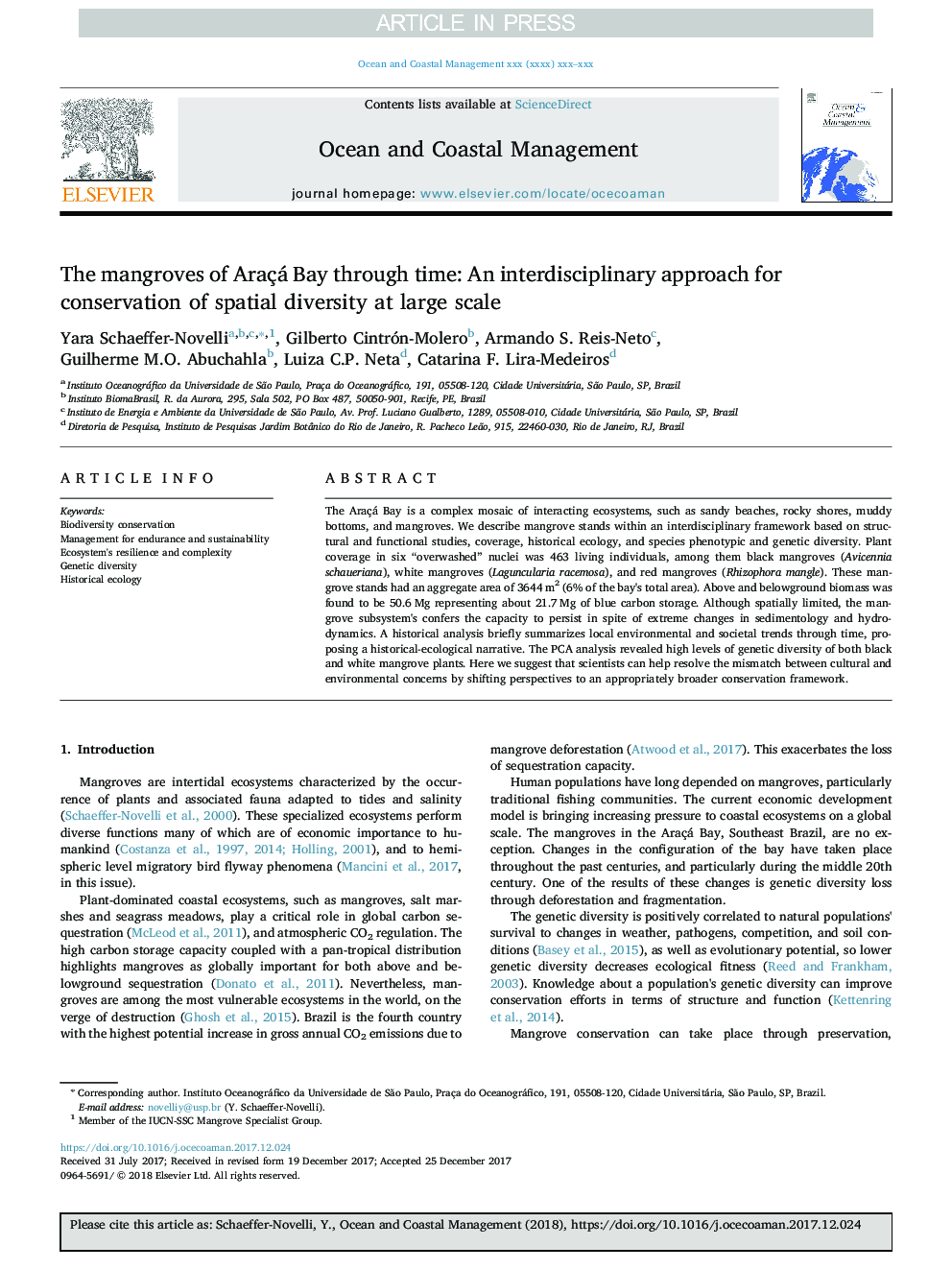| Article ID | Journal | Published Year | Pages | File Type |
|---|---|---|---|---|
| 11015648 | Ocean & Coastal Management | 2018 | 8 Pages |
Abstract
The Araçá Bay is a complex mosaic of interacting ecosystems, such as sandy beaches, rocky shores, muddy bottoms, and mangroves. We describe mangrove stands within an interdisciplinary framework based on structural and functional studies, coverage, historical ecology, and species phenotypic and genetic diversity. Plant coverage in six “overwashed” nuclei was 463 living individuals, among them black mangroves (Avicennia schaueriana), white mangroves (Laguncularia racemosa), and red mangroves (Rhizophora mangle). These mangrove stands had an aggregate area of 3644â¯m2 (6% of the bay's total area). Above and belowground biomass was found to be 50.6â¯Mg representing about 21.7â¯Mg of blue carbon storage. Although spatially limited, the mangrove subsystem's confers the capacity to persist in spite of extreme changes in sedimentology and hydrodynamics. A historical analysis briefly summarizes local environmental and societal trends through time, proposing a historical-ecological narrative. The PCA analysis revealed high levels of genetic diversity of both black and white mangrove plants. Here we suggest that scientists can help resolve the mismatch between cultural and environmental concerns by shifting perspectives to an appropriately broader conservation framework.
Related Topics
Physical Sciences and Engineering
Earth and Planetary Sciences
Oceanography
Authors
Yara Schaeffer-Novelli, Gilberto Cintrón-Molero, Armando S. Reis-Neto, Guilherme M.O. Abuchahla, Luiza C.P. Neta, Catarina F. Lira-Medeiros,
